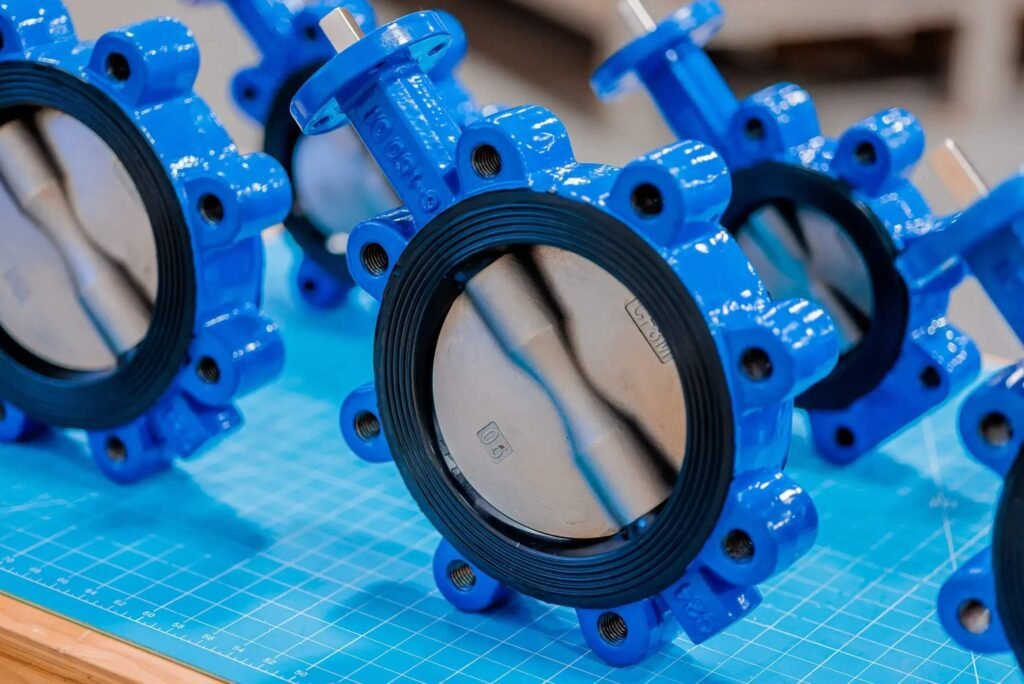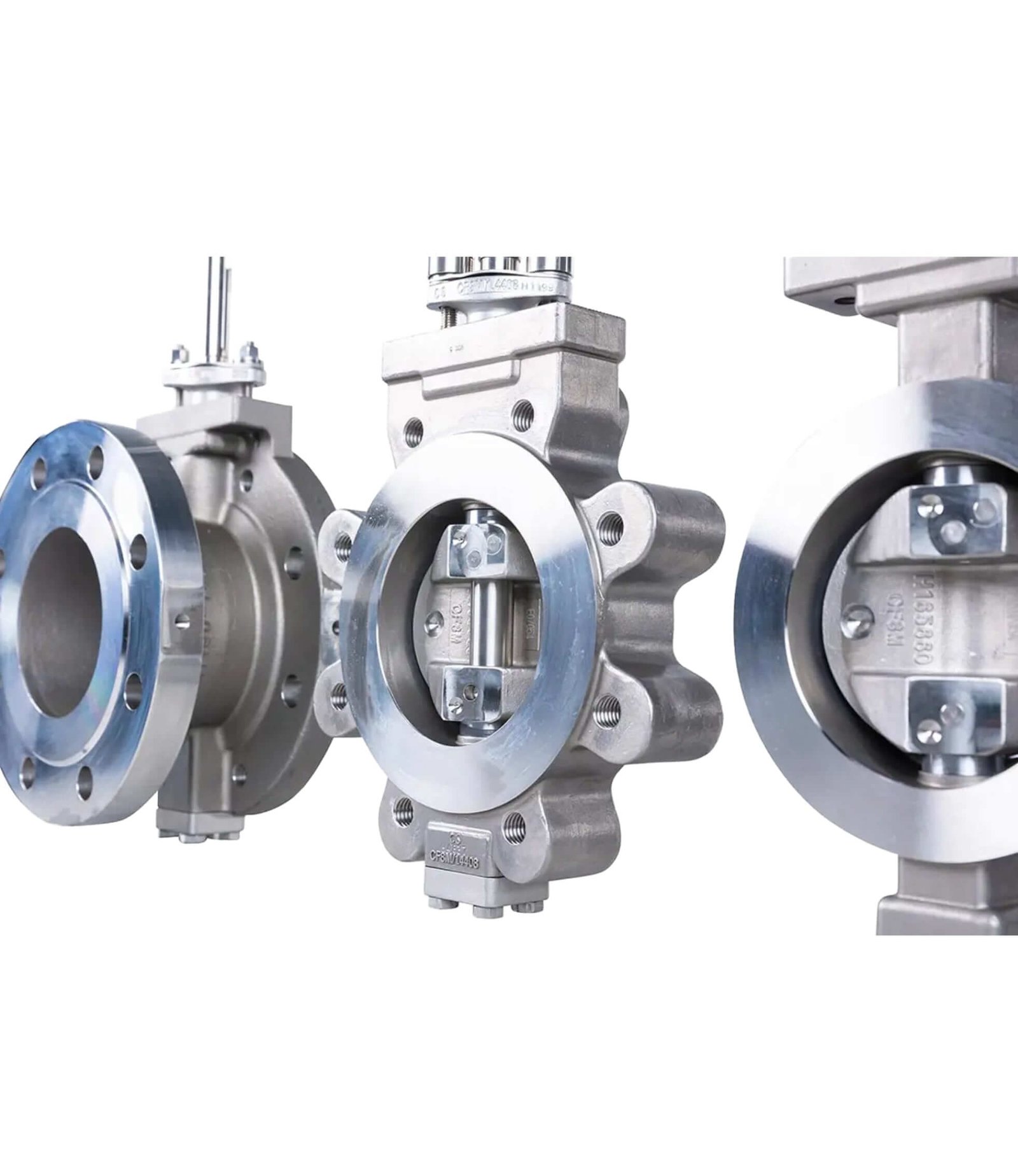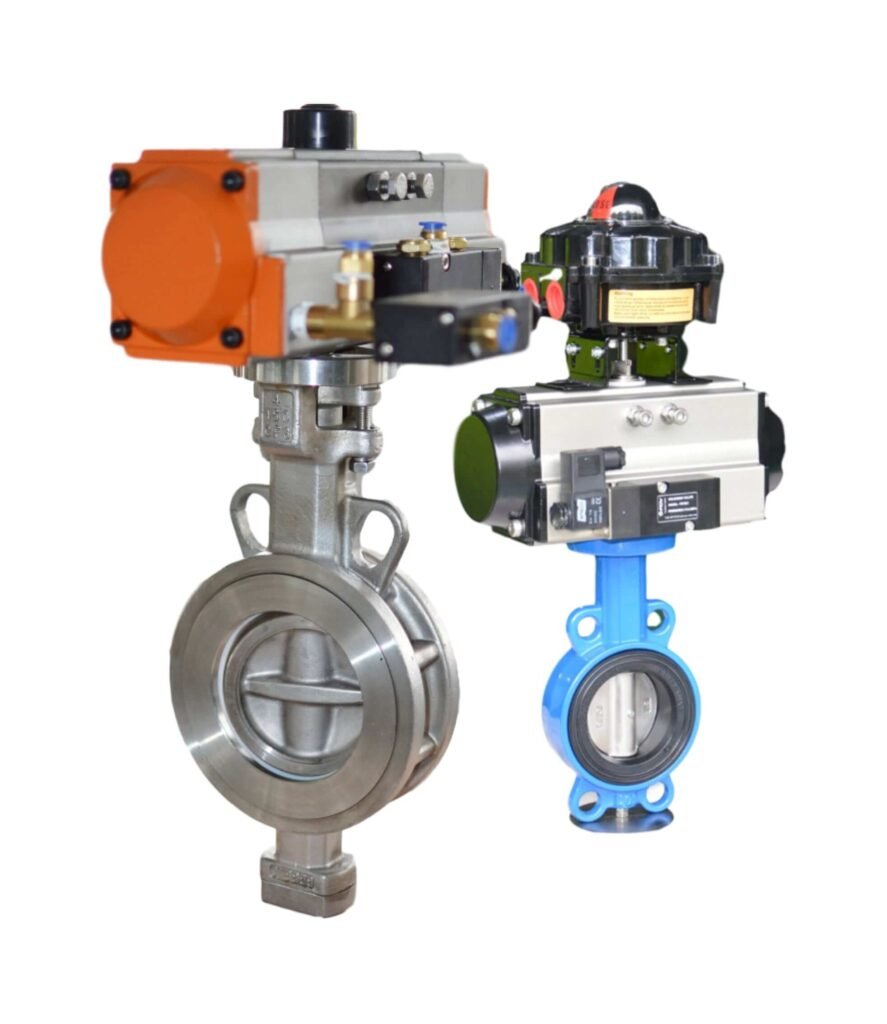China Butterfly Valve Manufacturer
Your Trusted Buttefly Valve Supplier
We are one of the leading producers of industrial valves at BYZER manufactures industrial grade ball valve, butterfly valve etc., with high quality. Each valve is manufactured in accordance with the most stringent international standards. Our advanced production facility China, enforced with ANSI, API,DIN,GOST, BS,JIS and China GB standards “By staying true to the principles of quality, innovation and a rebellious spirit, we’ll make certain that our products provide always the best quality paired with top performance.
Cast iron Butterfly valve
PVC Butterfly valve
High Temperature Butterfly valve
Stainless steel Butterfly valve
Metal Hard Seal Butterfly valve
Sanitary Butterfly Valve
REQUEST A QUOTE FOR MORE DETAILS
How to buy a right Butterfly Valves for your project
What is a Butterfly Valve?
A butterfly valve is a quarter-turn rotational motion valve used to start, stop, and regulate fluid flow. Its name derives from the motion of its disc, which rotates like a butterfly wing. This type of valve is widely used in various industries due to its lightweight, compact design, and quick operation.
How Does a Butterfly Valve Work?
Butterfly valves function by rotating a disc attached to a rod. When the valve is fully closed, the disc blocks the passageway completely. Rotating the disc a quarter turn to open position allows fluid to pass through with minimal restriction. Intermediate positions provide precise flow control. The valve can be operated manually or through electric, pneumatic, or hydraulic actuators.



What Are Butterfly Valves Used For?
Butterfly valves are essential in numerous industries for their ability to control flow efficiently. Here are some common applications and the actuators typically used:
- Irrigation Systems: Manual or electric actuators for efficient water control.
- Petroleum Industries: Pneumatic or hydraulic actuators for high-pressure oil and gas management.
- Compressed Air Services: Pneumatic actuators for regulating air flow.
- Agricultural Industries: Manual or electric actuators for water, fertilizers, and pesticides.
- Cooling and Circulating Water Systems: Electric or pneumatic actuators for precise temperature control.
- Wastewater Treatment: Pneumatic or electric actuators for handling sewage and treated water.
- Chemical Processing: Pneumatic or hydraulic actuators for aggressive chemicals.
- Fire Protection Systems: Manual or electric actuators for reliable firefighting water flow.
- Slurry Handling: Hydraulic actuators for high-force slurry management.
- HVAC Systems: Electric actuators for precise airflow regulation in heating, ventilation, and air conditioning systems.
Advantages of Butterfly Valves
Butterfly valves offer numerous advantages, making them a popular choice in various applications:
- Compact Design: Takes up less space compared to other valve types.
- Cost-Effective: Generally more affordable and easier to install.
- Quick Operation: Fast quarter-turn actuation for efficient flow control.
- Low Maintenance: Fewer moving parts result in lower maintenance requirements.
- Versatility: Suitable for a wide range of applications and materials.

Butterfly Valve Parts
Butterfly valves consist of several key parts including the body, disc, seat, and stem. Each part is available in various materials to meet specific application needs, such as corrosion resistance, strength, and temperature tolerance. This customization ensures optimal performance and longevity.
valve Body Options for Butterfly Valves
The body of a butterfly valve is the primary housing that encloses all internal components. It connects directly to the pipeline, forming a secure interface for the flow of fluids. The body is typically made from robust materials such as cast iron, stainless steel, or PVC, ensuring it can withstand various operating pressures and environmental conditions. We offer a range of materials to suit different applications.
| Material | Advantage |
|---|---|
| Ductile Iron | Durable and cost-effective. Suitable for general applications. |
| Cast Steel (Carbon Steel) | Strong and economical. Ideal for high-pressure situations. |
| Stainless Steel (SUS304, SUS316, SUS316L) | High corrosion resistance, suitable for harsh environments. |
| Special Materials (UPVC, CPVC, PTFE) | Excellent anti-corrosion properties. Used for chemical applications. |
Disc Options for Butterfly Valves
The disc is the central component that controls the flow of fluid through the valve. When the disc rotates, it either allows or restricts fluid passage. The disc is usually made from materials like stainless steel, aluminum, or other high-strength alloys to provide durability and resistance to corrosion. Depending on the design, the disc can be concentric or eccentric, impacting the sealing efficiency and the type of applications the valve is suitable for. The normal material of disc as below.

| Material | Advantage |
|---|---|
| Stainless Steel | High strength and corrosion resistance. Ideal for various industrial applications. |
| Ductile Iron | Combines strength and ductility. Suitable for general use. Low cost. |
| Nickel-Plated Ductile Iron | High corrosion resistance, suitable for harsh environments. |
| PTFE Coated Stainless Steel | Provides high corrosion resistance and a smooth surface to reduce friction and wear, ideal for chemical and food industries. |
| Aluminum Bronze | Excellent wear resistance. Used in seawater and high-wear environments. |
Seat Options for Butterfly Valves
The seat of a butterfly valve is crucial for providing a seal between the disc and the body. Seats can be categorized into two main types: soft seats and hard seats, each suitable for different applications.
Soft Seats
Soft seats are made from elastomeric materials that provide excellent sealing capabilities. They are ideal for low to medium pressure applications where tight shutoff is required.

| Material | Advantage |
|---|---|
| NBR (Nitrile Rubber) | Standard rubber suitable for water and air applications, offering good resistance to oils and fuels. |
| FKM (Viton) | Provides high chemical resistance, making it ideal for handling aggressive chemicals. |
| EPDM (Ethylene Propylene Diene Monomer) | Known for excellent wear resistance and durability, suitable for a wide range of temperatures and applications. |
| PTFE (Polytetrafluoroethylene) | Offers high chemical resistance and low friction, making it ideal for aggressive chemical applications and clean environments. |
| UPVC (Unplasticized Polyvinyl Chloride) | Provides excellent chemical resistance, suitable for corrosive environments. |
Hard Seats
Hard seats are designed for high-temperature and high-pressure applications. They are made from durable materials that can withstand more extreme conditions compared to soft seats.

| Material | Advantage |
|---|---|
| Steel+Steel | Provides a durable metal-to-metal seal, suitable for high-temperature and high-pressure environments. |
| Steel+Copper | Combines the strength of steel with the malleability of copper for a reliable seal under extreme conditions. |
| Steel+Graphite | Offers excellent heat resistance and sealing capabilities, ideal for high-temperature applications. |
| Steel+Alloy | Utilizes various alloys to enhance durability and resistance to corrosion and wear, suitable for the most demanding applications. |
Stem
The stem connects the disc to the actuator and transmits the torque required to rotate the disc. It is designed to withstand the mechanical stresses involved in the operation of the valve. Stems are often made from stainless steel or other corrosion-resistant materials to ensure long-term durability. Some designs feature a blowout-proof stem to enhance safety by preventing the stem from being expelled from the valve body under pressure.
| Material | Advantage |
|---|---|
| Stainless Steel | Durable and corrosion-resistant. Suitable for harsh environments. |
| Carbon Steel | Strong and economical. Ideal for general use. |
| Monel | Highly resistant to corrosion in marine environments. |
| 17-4 PH Stainless Steel | High strength and toughness. Suitable for demanding applications. |
Types of Butterfly Valves
Butterfly valves are categorized based on various design features and functional aspects. Here’s a detailed explanation of the different types:
1. Based on Disc Closure Design
Concentric Butterfly Valve:
The disc is centered in the valve body, rotating around a central axis. This straightforward design is cost-effective and suitable for low-pressure applications.

Eccentric Butterfly Valve:
Eccentric butterfly valves have an offset disc design to enhance sealing and reduce wear. They are categorized as follows:
Single-Offset: The disc is slightly off-center from the valve’s central axis, reducing friction during operation. This design improves sealing and suits higher pressure applications than concentric valves.
Double-Offset (Double Eccentric): The disc is offset from both the valve’s central axis and the pipe’s centerline, creating a cam-like motion. This minimizes seat contact during operation, increasing seal longevity and reliability, ideal for demanding applications.
Triple-Offset: Adds a third offset, creating a cone-shaped sealing element. This design eliminates almost all contact between the disc and seat during operation, providing a highly durable metal-to-metal seal. Triple-offset valves handle extreme pressures and temperatures, suitable for critical applications requiring tight shutoff and long service life.
2. Based on Body Construction and Connection Design
Wafer Type: This is the most common design, which fits between two flanges using bolts that pass through the flanges and the valve body. It is lightweight and cost-effective, but it does not provide a secure seal if the downstream pipe is removed.
Lug Type: Features threaded inserts (lugs) on the valve body, allowing for installation between flanges with bolts that secure the valve in place. This type can act as an isolation valve, enabling the removal of downstream piping without disturbing the valve.
Flanged Type: Comes with flanged ends that bolt directly to the pipe flanges, providing a secure and robust connection. This design is typically used in larger valves and for applications requiring a tight seal and strong structural support.

3. Based on Seat Material

Soft Seated
These valves have a soft, elastomeric seat that provides excellent sealing capabilities, ensuring a tight shutoff. They are ideal for low to medium pressure applications and offer better corrosion resistance compared to metal-seated valves.

Metal Seated
These valves use a metal-to-metal seal, which provides high durability and temperature resistance. They are suitable for high-pressure and high-temperature applications but may not offer a bubble-tight shutoff.
4. Based on Actuation Method

Manual Butterfly Valve
These valves are operated by a hand lever or gear mechanism, making them simple to use and ideal for applications where automation isn’t necessary. They provide reliable on-off control and are cost-effective.
- Operation: Hand-operated
- Applications: Suitable for simple, low-frequency operations.
- Advantages: Cost-effective and straightforward to use.

Electric Butterfly Valve
Controlled by an electric actuator, these valves offer precise control and can be easily integrated into automated systems. They are perfect for remote operation and applications requiring frequent or complex adjustments.
- Operation: Uses an electric actuator.
- Applications: Ideal for automated systems requiring precise control.
- Advantages: Provides accurate and remote operation.

Pneumatic Butterfly Valve
These valves use compressed air to operate the actuator, allowing for quick and reliable valve operation. They are commonly used in industrial settings where fast cycling and frequent operation are needed.
- Operation: Actuated by compressed air.
- Applications: Common in systems needing rapid cycling.
- Advantages: Reliable and quick operation.
Considerations When Buying Butterfly Valves
When selecting a butterfly valve, it’s essential to consider several factors to ensure it meets your system’s needs effectively. Here’s a detailed breakdown:
Material Compatibility
- Ensure the valve material matches the fluid to prevent corrosion and wear. For example, stainless steel is ideal for corrosive fluids, while PVC is suitable for less aggressive media.
Pressure and Temperature Ratings
- Select a valve with pressure and temperature ratings that align with your system’s requirements. High-pressure systems may require metal-seated valves, whereas low-pressure systems can use soft-seated options.
Valve Size
- Correct sizing is crucial for efficient flow control and system integration. Accurately measure the pipe diameter to choose the appropriate valve size.
Actuation Method
- Choose based on control needs and available power sources. Manual actuators are suitable for simple operations, electric actuators for precise control, pneumatic for quick cycling, and hydraulic for high-force applications.
Installation Space
- Ensure the valve fits the available space for easy installation and maintenance. Wafer-type valves are compact, while flanged types may require more room.
Maintenance Requirements
- Opt for designs with fewer moving parts for easier maintenance. This reduces downtime and operational costs. For instance, a valve with a blowout-proof stem enhances safety and reliability.
Check for Standards
- Ensure the valve complies with industry standards like ANSI, API, or ISO for quality assurance.
Let's Started Today!
If you’re seeking the ideal valve solution for your industrial projects, we’re here to support you.
Tell us your requirements, and our team will provide the guidance and information you need to make the best decision for your operations.
Reach out now to enhance your systems with our reliable and efficient valve technologies.
Support
info@byzervalve.com
Ask For Quote Now!
Reply Within 24 Hours
Your email is confidential and safe with us. Our team guarantees your privacy.
